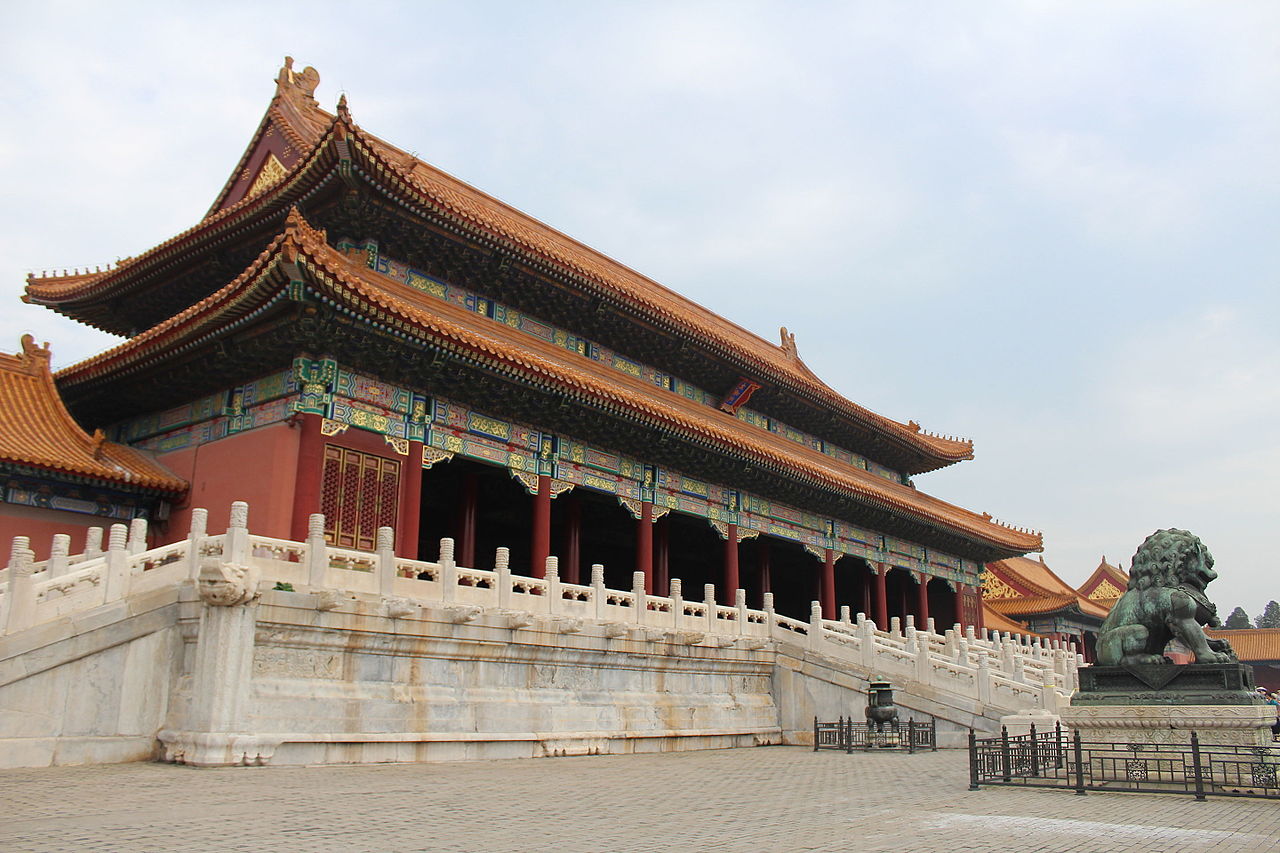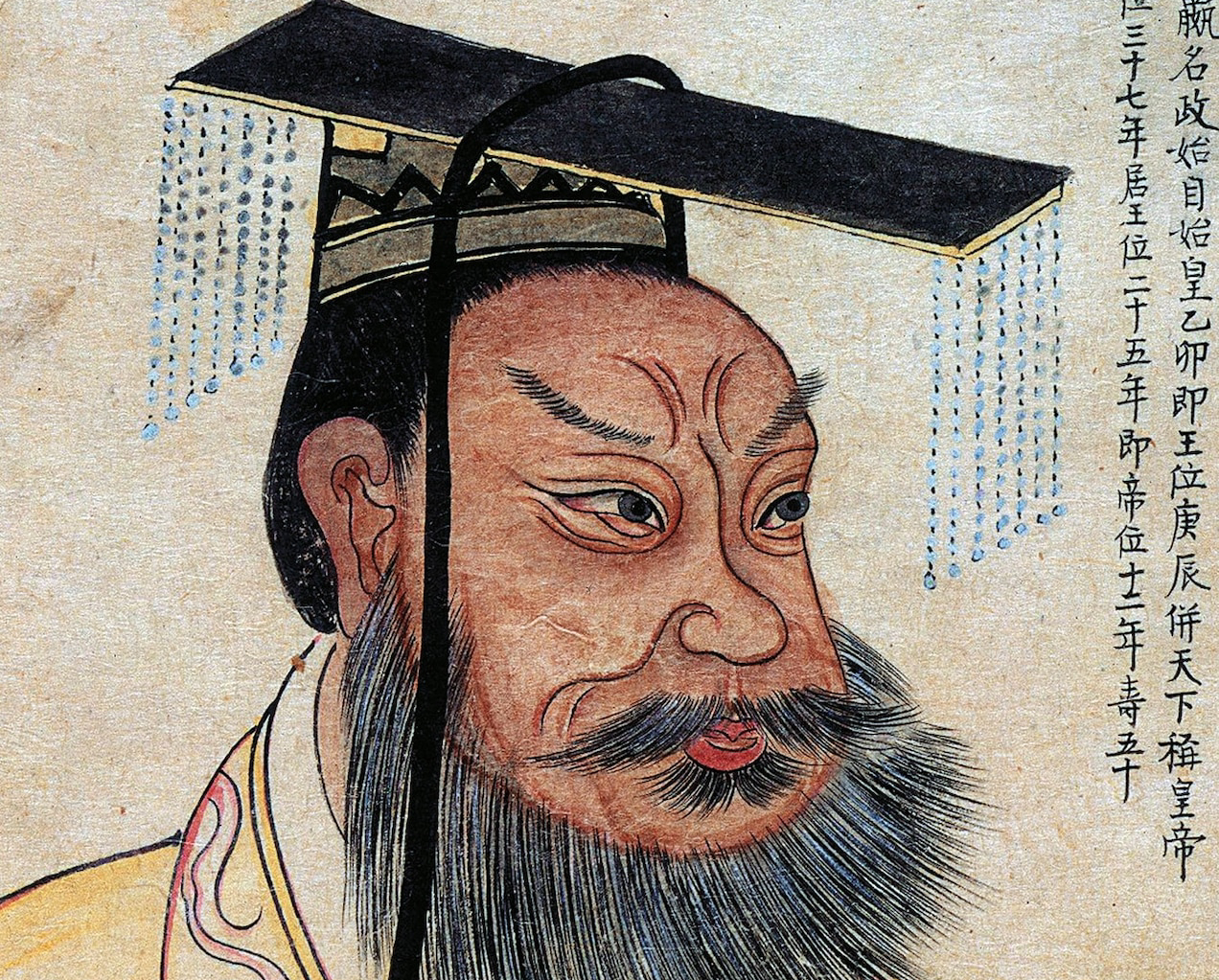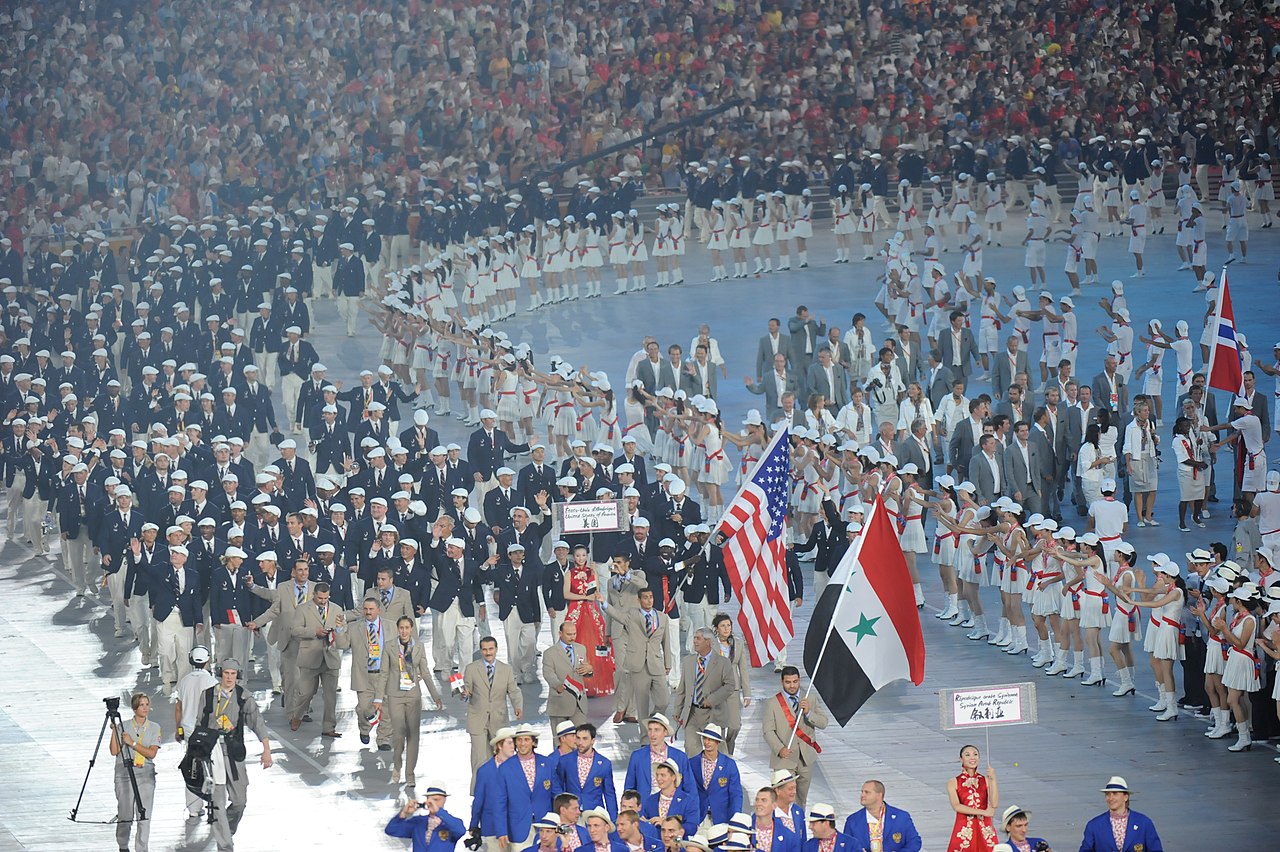Beijing is one of the most historically significant cities to the human race. The history of one of the most advanced ancient civilizations has been immortalized in the architecture and cultural traits of the people living there. It is very rare for a major capital to be located in one area for thousands of years, despite being conquered multiple times. It is home to many UNESCO world heritage sites and just about every time they dig a new foundation they find ancient artifacts. You could probably earn a university degree from studying Beijing but just in case you don't have four years, here are some 凉 (cool) facts about Beijing.
Beijing Facts
31. Beverly Hills got nothin' on Siheyuans
Siheyuans, the city's traditional housing style, and hutongs, the narrow alleys between Siheyuans, are common in urban Beijing and are also major tourist attractions. Siheyuans are known as courtyard houses. They usually consist of small buildings that are arranged in such a way that they create an outer wall and an inner private courtyard. Siheyuans always feature an elaborate entrance gate. These were historically homes of the wealthy and were often given as gifts by the emperor to his loyal followers.
 Suginami, CC BY-SA 4.0, Wikimedia Commons
Suginami, CC BY-SA 4.0, Wikimedia Commons
30. The capital in the north!
Beijing is the capital of the People’s Republic of China. Bei means northern, and jing means capital. Beijing literally means the north capital.Beijing is the center of the nation’s politics and international exchanges, and it is also China’s second largest city after Shanghai.
29. Who needs Cantonese anyway?
China's official language, Mandarin, is mostly based on the Beijing dialect. The official point of view is that both proper pronunciation in standard Chinese and Mandarin Chinese is based on the Beijing dialect and accent. There are couple of differences in regional vocabulary and grammar, as with any country, though by and large, the Beijing dialect is the thing you want to learn if you're moving to China. As a result, if you want to learn the Chinese language, there are few places better to learn it than Beijing.
28. Won't see Bocelli here
Beijing opera or Peking opera, a traditional form of Chinese theater, is an important part of the Chinese culture. This art form consists of a combination of song, spoken dialogue, and codified action sequences. People practice their opera singing at parks around the city as well as in opera houses. If you are traveling through China this is a cultural 'must see'.
 Chen Wen, CC BY 2.0, Wikimedia Commons
Chen Wen, CC BY 2.0, Wikimedia Commons
27. Kind of forbidden
Forbidden City, also known as Gu Gong in Chinese, lies at the city center of Beijing, and once served as the imperial palace for 24 emperors during the Ming and Qing Dynasties (1368 - 1911). Construction took 14 years during the reign of Emperor Chengzu in the Ming Dynasty (1368-1644). Rectangular in shape, it is the world's largest palace complex and covers 74 hectares. It is surrounded by a 52-meter-wide moat and a 10-meter-high wall and contains more than 8,700 rooms. It was forbidden to enter without special permission of the emperor. Hence its name 'The Forbidden City'.
 Olena Zakharian, CC BY-SA 4.0, Wikimedia Commons
Olena Zakharian, CC BY-SA 4.0, Wikimedia Commons
26. Forbidden Starbucks
From 2000-2007 there was a Starbucks in the Forbidden City. It was removed after protests by Chinese critics who said it damaged a major historical site. managers of the Forbidden City decided that they wanted all shops on its grounds to operate under the palace's brand.
 Mr. Tickle, CC BY-SA 3.0 , Wikimedia Commons
Mr. Tickle, CC BY-SA 3.0 , Wikimedia Commons
25. A land of many names
Beijing wasn't always called Beijing. In fact, the city has such a rich and deep history, with different people throughout the centuries all vying for control of what was once known as the City of Ji. Interestingly, Beijing literally translates as Northern Capital; it has also been known as Nanjing (Southern Capital), Zhongdu (Central Captial), Dadu (The Great Capital), Yanjing (The Yan Capital) and Beiping (Central Peace).
 ralph repo, CC BY 2.0 , Wikimedia Commons
ralph repo, CC BY 2.0 , Wikimedia Commons
24. Who is #2?
Despite being the capital of China, Beijing is actually smaller than Shanghai. This isn't surprising considering that Shanghai is the world's largest city by population. Beijing is still rather quite populous however, with a population of 22 million in 2015. As far as municipalities go, Beijing isn't the largest either; Beijing is only the second-largest direct-controlled municipality in China. Chongqing, in the middle of China and to the south west, is larger than Beijing.
23. Biking is better
Many people think Amsterdam to be the bicycle capital of the world. Beijing is the true bicycle capital of the world. There is a huge amount of Beijing real estate dedicated to bicycle paths and parking too, so you needn't worry about where to park your bike when getting around the capital. At rush hour, traveling by bike is much faster than by car.

History's most fascinating stories and darkest secrets, delivered to your inbox daily.
22. Wangs everywhere
According to a recent census, the most popular surname in Beijing is Wang, with an impressive 11% holding the name. To put that into perspective, the most common surname in the London is Smith, at 0.47% of the population; You don't have to spend a lot of time in Beijing before you meet some Wangs.
21. The wall
The Great Wall at Badaling, although 80 km from the city center, is technically in the Beijing Municipality. Therefore, Beijing is home to the world's largest and longest wall.
The Great Wall of China is one of the world's must see sights — the longest wall in the world, an awe-inspiring feat of ancient defensive architecture. Its winding path over rugged country and steep mountains makes you appreciate just how large an undertaking this must have been.
 Dolly442, CC BY-SA 3.0 , Wikimedia Commons
Dolly442, CC BY-SA 3.0 , Wikimedia Commons
20. Beijing duck AKA Peking duck
You really shouldn't be leaving Beijing without trying the most famous dish: Beijing roast duck. The dish is made using white Beijing ducks, who are roasted with compressed air injected between the duck and its skin. Less smoky, hard wood is used, like pear, peach, or date branches, leading to a fruity flavor and a reddish color on the skin of the duck.
19. Calligraphy
Calligraphy is a visual art related to writing. It is the design and execution of lettering creates using a broad tip brush. A contemporary calligraphic practice can be defined as, "the art of giving form to signs in an expressive, harmonious, and skillful manner". Beijing is known for its superb calligraphy and its most popular souvenirs include calligraphy brushes and ink pads.
18. Dynasties
Beijing was the capital to 6 notable dynasties spanning over 21 centuries, which is why there are so many historical sites to explore. It was the Qin Dynasty that unified the warring states into what is now the nation China. The first emperor Qin Shi Huang is known for the large terracotta army guarding his tomb.
221 BC: Yan State Capital, Warring States Period
1271: Capital of the Yuan Dynasty
1402: Ming Dynasty (1368–1644) Capital
1644: Qing Dynasty capital
1912: Republic of China capital
October 1, 1949: People's Republic of China inaugurated by Mao Zedong
 Unknown author, Wikimedia Commons
Unknown author, Wikimedia Commons
17. What next?
In 2022, Beijing will become the first city to host both the Summer and Winter Olympics.
 U.S. Army, CC BY 2.0, Wikimedia Commons
U.S. Army, CC BY 2.0, Wikimedia Commons
16. The Bird's Nest
One of the many must see sights in the city is the Olympic Park built for the Summer Olympics in 2008. China's National Stadium, or the Bird's Nest, as it has become known, is the world's largest steel structure and the most complex stadium ever constructed. It was designed by prolific artist Ai Weiwei.
15. More walls!
While most of the ancient walls are no longer standing (with the inner gates taken away in 1965 to build the second ring road) you can still see one of the gates at Qianmen by Tian'anmen Square, and the watchtower at Deshengmen.
 Yo Hibino, CC BY 2.0, Wikimedia Commons
Yo Hibino, CC BY 2.0, Wikimedia Commons
14. Best. Idea. Ever.
Chinese entrepreneurs rent out “traffic jam” scooters. They wait in traffic for motorists who are in a rush. One employee will whisk the rushed motorist away by motorcycle, dodging the traffic. Another employee drives the car to the final destination.
 sunming.biz, CC BY 2.0 ,Wikimedia Commons
sunming.biz, CC BY 2.0 ,Wikimedia Commons
13. Hold your breath
Breathing Beijing's air for six average days is the equivalent of smoking one cigarette. If you've only ever heard about Beijing's pollution on the news, you might be concerned about the air. However, the city has plenty of great air days, and the situation has improved a lot even in the last few years.
 Kentaro IEMOTO, CC BY-SA 2.0, Wikimedia Commons
Kentaro IEMOTO, CC BY-SA 2.0, Wikimedia Commons
12. Best time to go
Beijing is a city of extremes when it comes to its climate. The highest temperature in Beijing is 42 °C (109 °F) while the lowest temperature is -27 °C (-17 °F). This means the best time of the year to go is right before summer, or just after. April, May, September and October are the most beautiful and comfortable months.
 Geoff McKim, CC BY-SA 2.0, Wikimedia Commons
Geoff McKim, CC BY-SA 2.0, Wikimedia Commons
11. Comings and goings
Beijing Capital International Airport is the second busiest airport in the world. It services almost 100 million travellers every year. This airport is essentially a city on its own with its own fire dept, power generation, and law enforcement.
 Kambui, CC BY 2.0, Wikimedia Commons
Kambui, CC BY 2.0, Wikimedia Commons
10. Only the best
The history of the roast duck can be traced back to the Ming Dynasty, about 600 years ago. Cooks from all over China traveled to the Forbidden City and wanted to cook for the Emperor because only the best chefs could enter the palace kitchens. When the Qing Dynasty ended in 1911, the chefs who left the Forbidden City worked in restaurants around Beijing and brought the Peking Duck to all people.
 Emperor Huizong of Song, Wikimedia Commons
Emperor Huizong of Song, Wikimedia Commons
9. No English
Most Beijing citizens, particularly the taxi drivers, don’t speak English. Make sure you know your crucial Chinese phrases or have a phrasebook in hand. It will also help to have your destinations written in Chinese and carry your hotel's business card just in case.
8. All cabs are not created equal
Beijing is a city that has a multitude of cabs. But if you’d like to save a few bucks, better pick the less swanky looking ones because the more luxurious cars tend to have higher rates. The good news is many of the cabs have rate stickers on their back windows. Cab rates can vary from 1.6 to 2 RMB.
7. Bring your friends
When you order in restaurants, don’t expect to receive a dish just enough for yourself because food in Beijing (as in most Chinese restaurants) is served family style and meant to be shared.
 Gerd Eichmann, CC BY-SA 4.0, Wikimedia Commons
Gerd Eichmann, CC BY-SA 4.0, Wikimedia Commons
6. Beijing Subway
Public transport infrastructure is extremely impressive, with 14 lines currently running on the subway and 21 more lines to be added by 2020. Beijing's train stations are also built to carry the heavy burden of its huge population: 4 main stations, including one high-speed train station, service 590 trains every day, taking passengers throughout the entire country. On overage 9 million people ride the subway every day.
5. For the Emperor
With mountains surrounding the inland city on three sides, in addition to the old inner and outer city walls, Beijing was strategically poised and developed to be the residence of the emperor and thus was the perfect location for the imperial capital.
4. History for days
Beijing has seven UNESCO World Heritage Sites – the Forbidden City, Temple of Heaven, Summer Palace, Ming Tombs, Zhoukoudian, as well as parts of the Great Wall and the Grand Canal, all popular locations for tourism.
 Charlie fong, Wikimedia Commons
Charlie fong, Wikimedia Commons
3. Crotchless pants for who now?
Yes, toddlers in China can frequently be seen wearing crotchless pants, known as open-seat pants. These pants have a split in the crotch for to make it easier and faster for toddlers to do their business. Unfortunately they do encourage toddlers to do their business on the go which they certainly do, publicly in many cases. This is not considered appropriate in the US and in one extreme case a California lady called the police when she encountered a child wearing open-seat pants.
 Anna Frodesiak, Wikimedia Commons
Anna Frodesiak, Wikimedia Commons
1.Tank Man
Tiananmen Square is a city square in the centre of Beijing, named after the Tiananmen ("Gate of Heavenly Peace") located to its north, separating it from the Forbidden City. Outside China, the square is best known for the Tiananmen Square Massacre, an armed suppression of a pro-democracy movement in June 1989. Tank Man (also known as the Unknown Protester) is the nickname of an unidentified man who stood in front of a column of tanks on June 5, 1989, the morning after the Chinese military had suppressed the Tiananmen Square protests of 1989 by force. As the lead tank maneuvered to pass by the man, he repeatedly shifted his position in order to obstruct the tank's attempted path around him. The incident was filmed and seen worldwide. WyldKyss, Flickr
WyldKyss, Flickr























